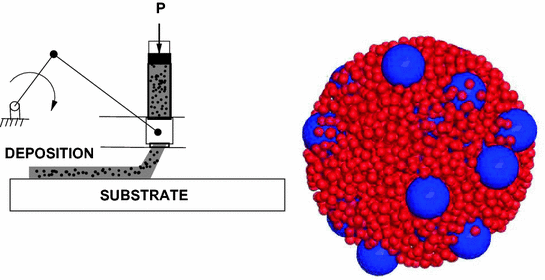Springer International Publishing AG 2018
Tarek I. Zohdi Modeling and Simulation of Functionalized Materials for Additive Manufacturing and 3D Printing: Continuous and Discrete Media Lecture Notes in Applied and Computational Mechanics
1. Introduction: Additive/3D Printing MaterialsFilaments, Functionalized Inks, and Powders
Tarek I. Zohdi 1
(1)
University of California, Berkeley, CA, USA
Additive manufacturing (AM) is usually defined as the process of joining materials to make objects from 3D model data, typically layer upon layer, as opposed to subtractive manufacturing methodologies, which remove material (American Society for Testing and Materials, ASTM). We refer the reader to the recent overview article by Huang et al. [] of the 3D Systems Corporation in 1984. 3DP was a 2.2 billion dollar industry in 2014, with applications ranging from motor vehicles, consumer products, medical devices, military hardware, and the arts.
Fig. 1.1
Typical printing ingredients: top left: finely ground metallic powder (iron). Top right: extruded PLA. Bottom left: ABS pellets and bottom right: coarsely ground steel flakes
A key ingredient of these processes is the specialized materials and the precise design of their properties, enabled by the use of fine-scale functionalizing particles. The rapid rise in the use of particle-based materials has been made possible by the large-scale production of consistent, high-quality particles, which are produced in a variety of ways, such as: (a) sublimation from a raw solid to a gas, which condenses into particles that are recaptured (harvested), (b) atomization of liquid streams into droplets by breaking jets of metal, (c) reduction of metal oxides, and (d) comminution/pulverizing of bulk material. As mentioned in the preface, particle-functionalized materials play a central role in this field, in three main ways:
- (1)
To enhance overall filament-based material properties, by embedding particles within a binder, which is then passed through a heating element and deposited onto a surface,
- (2)
To functionalize inks by adding particles to freely flowing solvents forming a mixture, which is then deposited onto a surface, and
- (3)
To directly deposit particles, as dry powders, onto surfaces and then to heat them with a laser, e-beam, or other external source, in order to fuse them into place.
In more detail, we have (see Fig. ):
Heated filament-based materials (historically for prototyping) are comprised of thermoplastics. To extend the materials to applications beyond prototyping, second-phase particles are added to the heated mixture which solidify (cure) to form the overall material properties comprised of particles in a binding matrix when deposited onto a substrate. The particles are used to tune the binding matrix properties to the desired overall state. Specifically, much of the commercial additive manufacturing processes are polymer-based, with second-phase particles added to enhance the properties of the binder, which is typically either (1) polylactic acid or polylactide (PLA), which is a biodegradable thermoplastic aliphatic polyester or (2) acrylonitrile butadiene styrene (ABS) which is a common thermoplastic polymer. In 2015, PLA had the second highest consumption volume of any bioplastic of the world. PLA is derived from renewable resources, such as plants (corn starch, sugarcane, etc.). ABS is a terpolymer that is significantly stronger than PLA. It is made by polymerizing styrene and acrylonitrile in the presence of polybutadiene. The styrene gives the plastic a reflective surface, while the rubbery polybutadiene endows toughness. The overall properties are created by rubber toughening, where fine particles of elastomer are distributed throughout the rigid matrix. Typically, metal and ceramic particles are also added to endow specific mechanical, thermal, electrical, and magnetic effective overall properties.
Functionalized ink materials (primarily for printed electronics) are comprised of particles in a solvent/lubricant which cure when deposited. Oftentimes, these inks are used to lay down electric circuit lines or to have some other specific electromagnetic function on a surface. One application where such functionalized inks are important is printed electronics on flexible foundational substrates, such as flexible solar cells and smart electronics. One important technological obstacle is to develop inexpensive, durable electronic material units that reside on flexible platforms or substrates which can be easily deployed onto large surface areas. Ink-based printing methods involving particles are, in theory, ideal for large-scale electronic applications and provide a framework for assembling electronic circuits by mounting printed electronic devices on flexible plastic substrates, such as polyimide and PEEK (polyether ether ketone, a flexible thermoplastic polymer) film. There are many variants of this type of technology, which is sometimes referred to as flexible electronics or flex circuits. Flex circuits can be, for example, screen-printed silver circuits on polyester. For an early history of the printed electronics field, see Gamota []).
Dry powder-based materials (primarily for sintered load-bearing structures) are deposited onto a surface and then heated by a laser, e-beam, or other external source, in order to fuse them into place. These types of applications and associated technology are closely related to those in the area of spray coatings, and we refer the reader to the extensive works of Sevostianov and Kachanov [ Because of the monochromatic and collimated nature of lasers, they are a highly controllable way to process powdered materials, in particular with pulsing, via continuous beam chopping or modulation of the voltage. Carbon dioxide (

) and yttrium aluminum garnet ( YAG ) lasers are commonly used. The range of power of a typical industrial laser is relatively wide, ranging from approximately 10010000 W. Typically, the initial beam produced is in the form of collimated (parallel) rays, which are then focused with a lens onto a small focal point as fine as 0.00001 m in diameter. However, a chief concern of manufacturers are residual stresses and the microstructural defects generated in additively manufactured products, created by imprecisely controlled heat-affected zones, brought on by miscalibration of the laser power needed for a specific goal. In particular, because many substrates can become thermally damaged, for example, from thermal stresses, ascertaining the appropriate amount of laser input is critical.
Fig. 1.2
Left: a linkage schematic of a 3D printer. Right: a multiphase droplet representation using the Discrete Element Method
1.1 Objectives
In order for emerging additive manufacturing approaches to succeed, such as the ones mentioned, one must draw upon rigorous theory and computation to guide and simultaneously develop design rules for the proper selection of particle, binder, and solvent combinations for upscaling to industrial manufacturing levels (Fig. ). This motivates the content of this monograph. This monograph is broken into two main methodologies: Continuum Method (CM) approaches and Discrete Element Method (DEM) approaches. The materials associated with heated filament and functionalized-ink methods are closely related types of continua (particles embedded in a continuous binder) and are analyzed using continuum approaches. The dry powder materials, which are of a discrete particulate character, are analyzed using discrete element methods for the deposition phase of the analysis, and continuum approaches are used for the curing (cooling) stress analysis. This monograph seeks to introduce the reader to some of the main approaches for modeling and simulation of particle-based materials used in additive manufacturing, namely:


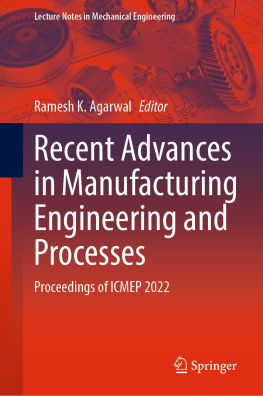
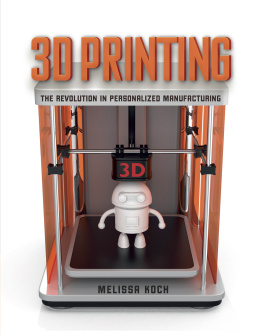
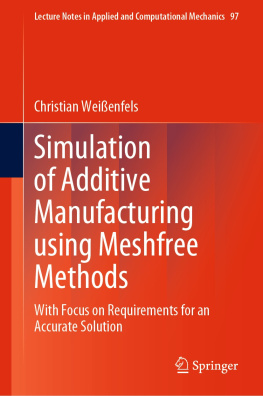
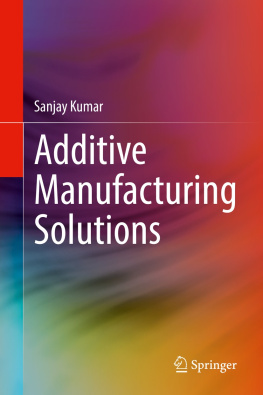
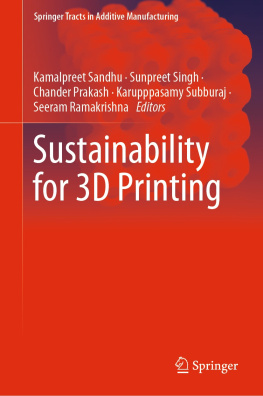
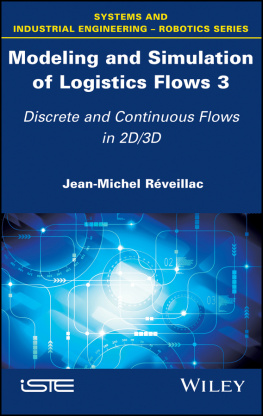
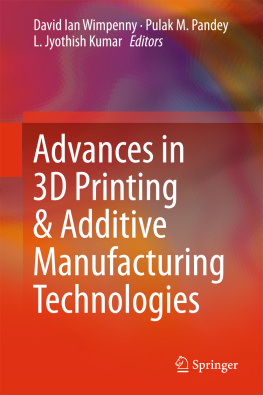
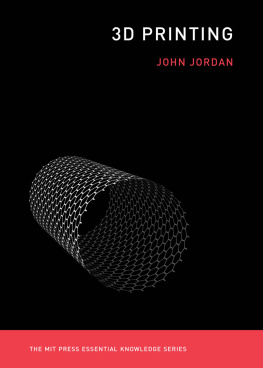
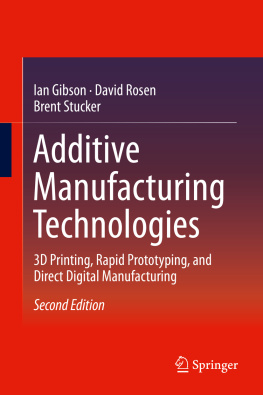
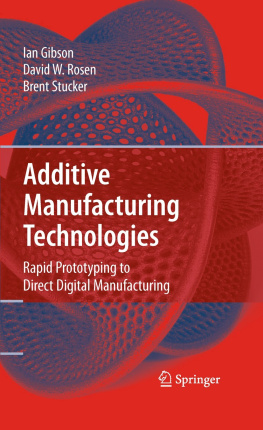

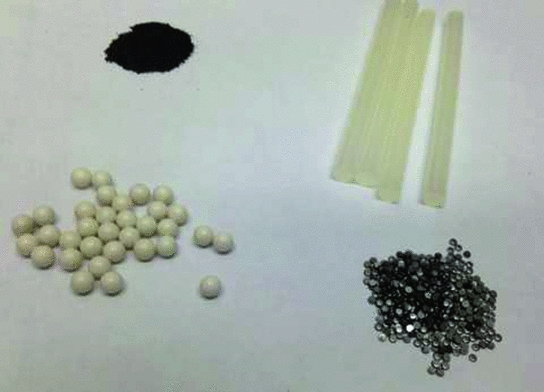
 ) and yttrium aluminum garnet ( YAG ) lasers are commonly used. The range of power of a typical industrial laser is relatively wide, ranging from approximately 10010000 W. Typically, the initial beam produced is in the form of collimated (parallel) rays, which are then focused with a lens onto a small focal point as fine as 0.00001 m in diameter. However, a chief concern of manufacturers are residual stresses and the microstructural defects generated in additively manufactured products, created by imprecisely controlled heat-affected zones, brought on by miscalibration of the laser power needed for a specific goal. In particular, because many substrates can become thermally damaged, for example, from thermal stresses, ascertaining the appropriate amount of laser input is critical.
) and yttrium aluminum garnet ( YAG ) lasers are commonly used. The range of power of a typical industrial laser is relatively wide, ranging from approximately 10010000 W. Typically, the initial beam produced is in the form of collimated (parallel) rays, which are then focused with a lens onto a small focal point as fine as 0.00001 m in diameter. However, a chief concern of manufacturers are residual stresses and the microstructural defects generated in additively manufactured products, created by imprecisely controlled heat-affected zones, brought on by miscalibration of the laser power needed for a specific goal. In particular, because many substrates can become thermally damaged, for example, from thermal stresses, ascertaining the appropriate amount of laser input is critical.